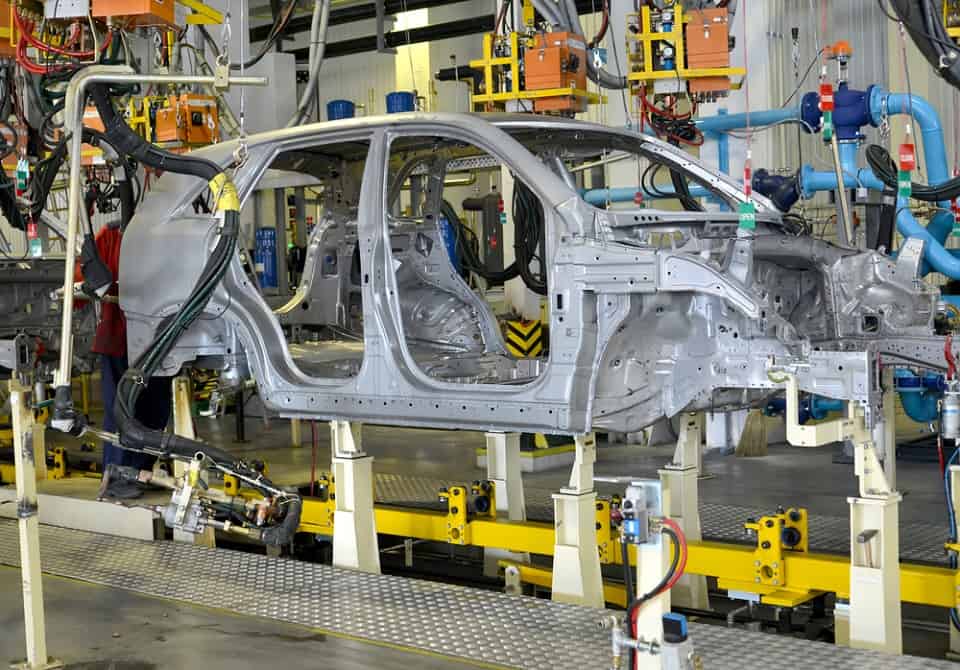
In order to assess total solvency, loan holders are therefore not overly concerned with the value of equity beyond the basic level of equity. But because stockholders’ equity may only be paid out after bondholders’ equity has been paid out, shareholders are worried about both liabilities and equity accounts. When a firm issues common shares and preferred shares in addition to its retained operating profits, this is referred to as shareholder equity, stockholder equity, or shareholder net worth. Ever wondered how much cash you as a shareholder would get if a firm was dissolved, all of its assets were sold, and all debts were settled? Now let’s talk about shareholders equity, often known as shareholder’s capital or net assets.
- And they would pick up their dinner – no one paid attention to it.
- The success of JPMorganChase has always been predicated on the success of the United States of America and the health of the world, particularly the strength of free and democratic countries.
- Stockholders’ equity is also referred to as shareholders’ or owners’ equity.
- There will be substantial turnover in small businesses in the next decade, and we must prepare the next generation with the skills and passion to take the baton.
- Long-term liabilities are those that are due for repayment in periods beyond one year; they include bonds payable, leases, and pension obligations.
- We are very patient, and don’t believe that there is any magic to the next 12 months, and, therefore, we look at excess capital as earnings in store or reserve – waiting to be used.
Example of Shareholders’ Equity Calculation
- While it varies by industry, an ROE of around 10% is generally considered a benchmark for a well-managed company.
- The income statement reports the revenues, gains, expenses, losses, net income and other totals for the period of time shown in the heading of the statement.
- Liabilities also include amounts received in advance for a future sale or for a future service to be performed.
- It’s just an honest assessment – not to blame yourself or get mad about it.
- You must add long-term assets to current assets to get the total assets for this equity formula.
- Similarly, certain safety net programs may inadvertently discourage paid work.
Since they were not purchased, their high market values are not included in the corporation’s assets. Other long-term assets may have appreciated in value while the accountant was Retail Accounting depreciating them. Therefore, they may appear on the balance sheet at a small fraction of their fair market value. Corporations routinely need cash in order to replace inventory and other assets whose costs have increased or to expand the business. As a result, corporations rarely distribute all of their net income to stockholders. The common stockholder has an ownership interest in the corporation; it is not a creditor or lender.

Stockholders’ Equity and Retained Earnings (RE)
- The shareholders’ equity formula contains four key elements – retained earnings, additional paid-in capital, other comprehensive income, and treasury stock.
- If a corporation had 100,000 shares outstanding, a stockholder who owned 1,000 shares owned 1% of the corporation (1,000 ÷ 100,000).
- For example, the equity of a company with $1 million in assets and $500,000 in liabilities is $500,000 ($1,000,000 – $500,000).
- Such moves would ultimately make these countries far more reliant on China and Russia – over time effectively making them vassal states.
- You can find information about treasury stock in the equity section of a company’s balance sheet.
- The inventory of a manufacturer should report the cost of its raw materials, work-in-process, and finished goods.
Consider this actual balance sheet for Bank of America Corporation (BAC), taken from their 2023 annual report. The numbers for total assets and total liabilities are $3.18 trillion and $2.88 trillion, respectively. The share capital represents contributions from stockholders gathered through the issuance of shares.

Daily market analysis: Stagflation fears, crude plummets – market turmoil.
The company’s shareholder’s typically care about the company’s profits and are interested in their equity. A shareholder’s acquisition of firm stock over time also results in capital gains for them and grants them the ability to vote in board of directors elections. The shareholders’ interest in the company’s equity is maintained by all such payouts. It is possible to determine a company’s shareholders’ equity by deducting its total liabilities from its total assets, both of which are listed on the balance sheet. In the absence of a balance sheet, the shareholder’s equity can be determined by adding up all assets and deducting all liabilities to get the shareholder’s equity.

What is the Difference Between Shareholders’ Equity and the Market Equity Value?

The main reason for a stock split is to reduce the market price per share of stock. The certificate would indicate the type of stock (common, preferred), any restrictions pertaining to the sale of the stock, the stockholders equity equation number of shares, the par value, etc. Today, the larger corporations with many shareholders are likely to use electronic records instead of issuing the paper stock certificates. A distribution of part of a corporation’s past profits to its stockholders. A dividend is not an expense on the corporation’s income statement.

This guide provides a clear explanation of ROE, including its formula, interpretation, and limitations. Learn how to use ROE effectively, alongside other metrics like ROA, to make informed investment decisions. A business might have a high ROE but limited reinvestment opportunities (e.g., it has already saturated its market), in which case future growth would be restricted. A company that operates without debt might have a lower ROE than one with more debt, not because they are less efficient, but because they have a larger equity base. Investors should be careful not to rely too heavily on ROE when comparing companies with different debt levels.
Capital stock is a term that encompasses both common stock and preferred stock. Paid-in capital (or contributed capital) is that section of stockholders’ equity that reports the amount a corporation received when it issued its shares of stock. The shareholders’ equity is the remaining amount of assets available to shareholders after the debts and other liabilities have been paid. The stockholders’ equity subtotal is located in the bottom half of the balance sheet. Shareholder equity (SE) is a QuickBooks company’s net worth and it is equal to the total dollar amount that would be returned to the shareholders if the company must be liquidated and all its debts are paid off. Thus, shareholder equity is equal to a company’s total assets minus its total liabilities.
The earnings per share calculation is the after-tax net income (earnings) available for the common stockholders divided by the weighted-average number of common shares outstanding during that period. Have you ever wondered what makes a company financially stable? For businesses and investors alike, stockholders’ equity is one of the key answers.
- I would also like to express my deep gratitude to the 300,000+ employees, and their families, of JPMorganChase.
- Actual equity value or equity book value is both examples of total equity.
- These items might seem minor, but they contribute to the bigger picture of a company’s financial health.
- These assets should have been held by the business for at least a year.
- This is far cheaper for retailers than debit card alternatives, such as cash and checks, while debit cards also provide retailers immediate guaranteed money and are preferred by consumers.
This financial metric is typically listed on a company’s balance sheet and is commonly used by analysts to determine the company’s overall fiscal health. The stockholders’ equity, also known as shareholders’ equity, represents the residual amount that the business owners would receive after all the assets are liquidated and all the debts are paid. Shareholder equity is also known as the book value of the company and is derived from two main sources, the money invested in the business and the retained earnings. Stockholders’ equity can be calculated by subtracting the total liabilities of a business from total assets or as the sum of share capital and retained earnings minus treasury shares. The stockholder’s equity can be calculated by deducting the total liabilities from the company’s total assets. In other words, the Shareholder’s equity formula finds the net value of a business or the amount that the shareholders can claim if the company’s assets are liquidated, and its debts are repaid.

